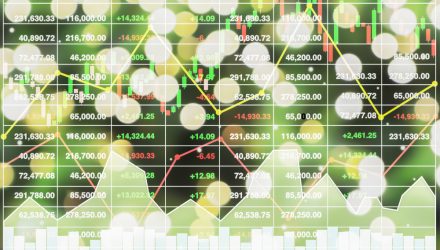Despite the recent pullback, many advisors are concerned about valuations in global equity markets. But in the current yield environment, simply diversifying into bonds isn’t particularly attractive. What’s really needed is a new approach to generating long-term consistent returns that uses all the tools in the toolbox to manage risk and enhance potential returns at the same time.
In the upcoming webcast, Stacking Returns Strategies for Overcoming a Low Return Environment, Corey Hoffstein, co-founder and CIO, Newfound Research; Rodrigo Gordillo, president and portfolio manager, ReSolve Asset Management Global; and Jeremy Schwartz, global CIO, WisdomTree Asset Management, will present new and compelling research that suggests capital efficiency — maximizing the work every invested dollar does in a portfolio — could be the key to unlocking a next-generation total return portfolio. You won’t want to miss this provocative discussion.
For example, the Strategy Shares Newfound/ReSolve Robust Momentum Index ETF (ROMO) tries to reflect the performance of the Newfound/ReSolve Robust Equity Momentum Index. The strategy tries to implement a style taken from Newfound Research, which has been helping to manage tactical equity strategies since 2008 and the ReSolve principals have been doing so since 2009.
Each week, the Newfound/ReSolve Robust Equity Momentum Index combines the votes of thousands of simple models, pursuing robustness through a combination of simplicity and diversification, not complexity. The index tilts towards out-performing equity regions — and thereby avoid perennial losers — by allocating towards the equity region that is exhibiting the strongest relative performance. The index seeks to avoid the impact of prolonged equity market declines by allocating towards short- or intermediate-term U.S. Treasuries when global equity market returns turn negative.
Something like the recently launched WisdomTree Target Range Fund (GTR), an actively managed ETF, can help provide capital appreciation, with a secondary objective of hedging risk. In pursuing these objectives, GTR aims to follow the methodology of the TOPS Global Equity Target RangeTM Index. GTR utilizes a call spread strategy whose returns seek to be similar to the returns of the index but will not match the index’s returns due to the amount and timing of assets that flow in and out of GTR and GTR’s fees and expenses.
For a more domestic focus, investors can look to something like the WisdomTree U.S. Growth & Momentum Fund (WGRO), which tracks the O’Neil Growth Index. WGRO’s roster is comprised of large- and mid-cap equities displaying favorable growth and momentum characteristics.
Financial advisors who are interested in learning more about stacking returns strategies can register for the Friday, January 28 webcast here.








